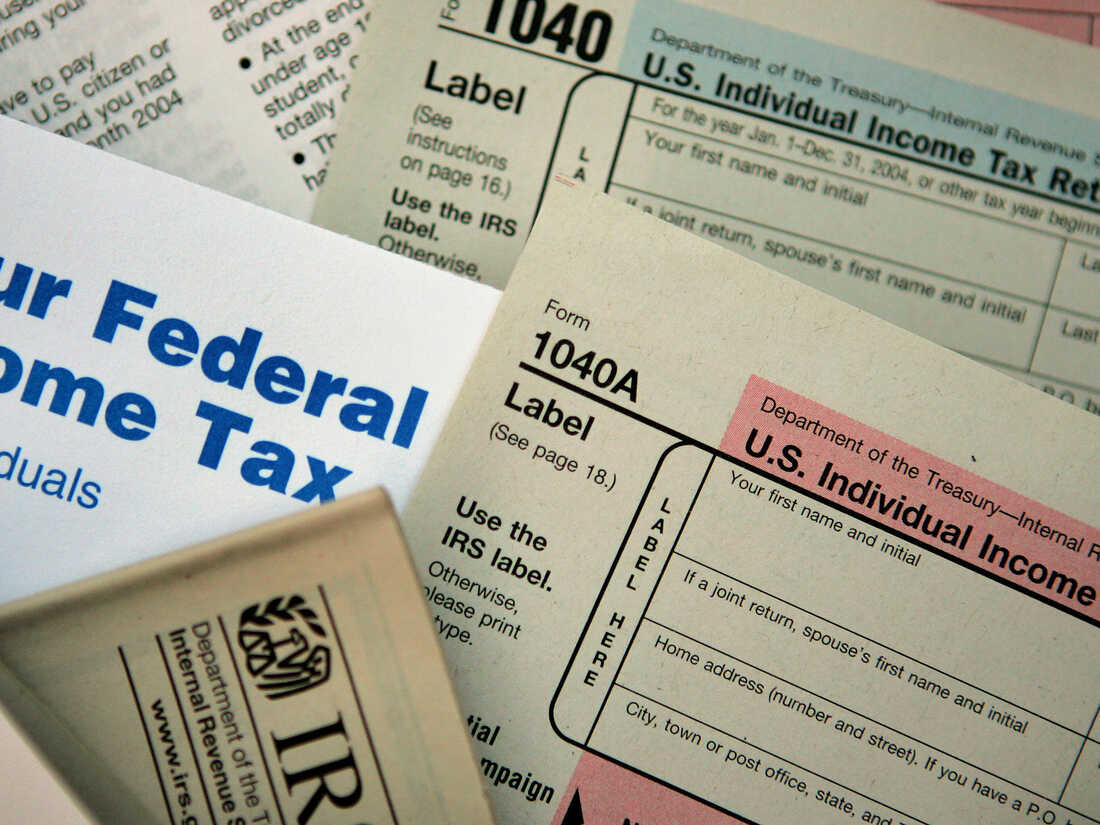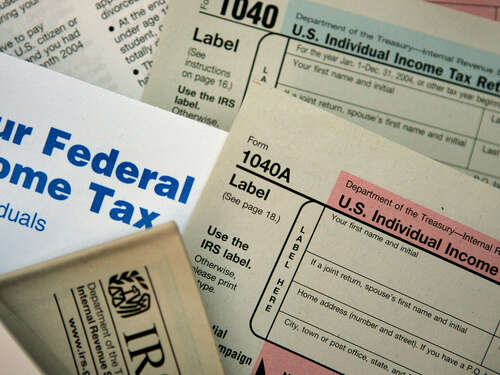
About a third of all taxpayers are expected to file their returns in the last two weeks before the April 15th deadline.
Scott Olson/Getty Images
hide caption
toggle caption
Scott Olson/Getty Images

About a third of all taxpayers are expected to file their returns in the last two weeks before the April 15th deadline.
Scott Olson/Getty Images
With less than a week to go before the April 15th deadline, most taxpayers can breathe easy. About two-thirds have already filed their returns. And 68% of those got refunds. The average refund so far in 2024 is $3050 — 4.8% bigger than last year. Here are five things to know about this year’s tax filing season.
Procrastination rate holds steady
This year’s filing season began a week later than last year’s. But as of March 29, the total number of returns filed with the IRS was roughly even with last year. The agency had received more than 90 million tax returns by the end of last month. The vast majority of people (96.7%) filed electronically — which the IRS prefers and which greatly speeds processing. Of those electronic returns, 53% were completed by tax professionals while 47% were done by do-it-yourselfers. The IRS expects to receive about 50 million more returns during the final two weeks of the filing season. (Because of state holidays, taxpayers in Massachusetts and Maine have until April 17th to file this year.)
If you need more time
If you can’t get your taxes done by next week’s deadline, you can always file for an extension. That buys you another six months, until October 15. Postponing the filing deadline doesn’t postpone the tax bill, though. You should still go ahead and pay any taxes you think you owe now, to avoid facing penalties and interest for a late payment.
Some people filed for free this year using a new IRS website
A small group of people sidestepped the commercial tax prep industry and filed electronic returns directly with the government for free this year. They were part of a new, IRS pilot program called “Direct File.” It’s only available in 12 states, and only for people with relatively simple tax returns. The IRS estimates that about 100,000 people might experiment with the program this year. If successful, Direct File could be expanded to more states and more taxpayers in future years.
If you don’t qualify for the new Direct File program, you still might be able to file your taxes for free, so long as your adjusted gross income is under $79,000. You can check out free tax-filing options at the IRS Free File website. Some of the options include a free state tax return as well.
Crafters, re-sellers, and ticket scalpers avoid a paperwork headache for now
Under the American Rescue Plan, companies like eBay, Etsy, Depop and StubHub were supposed to start sending 1099-K tax forms this year to anyone who sold or re-sold items for as little as $600 in 2023. Those sales were also to be reported to the IRS, to make sure anyone who earned a profit on them paid the appropriate income tax. After complaints that would create a paperwork nightmare for a lot of small-time sellers (“What’s my cost basis for that used guitar I just sold?”), the IRS postponed enforcement of the new rule. For the 2023 tax year, the agency will stick with its old reporting threshold, which only requires 1099-Ks for people who made at least $20,000 in sales and had more than 200 transactions.
Small sellers aren’t completely off the hook, though. For the current tax year (the one you’ll report on next year), the IRS plans to require 1099-Ks for sales of $5000 rather than $20,000. And unless Congress changes the law before then, the $600 threshold is set to kick in the following year. None of these reporting requirements change anyone’s tax liability — just the government’s ability to track the sales.
Rising wages and ‘bracket creep’
Workers’ incomes have generally been rising. Average wages rose 4.1% for the 12 months ending in March. Because the federal income tax is “progressive” — meaning higher incomes are subject to higher tax rates — rising incomes could push people into higher tax brackets — a phenomenon known as “bracket creep.” The IRS guards against this by adjusting tax brackets upwards each year, in line with inflation. If your income rises more slowly than inflation, you could actually find yourself in a lower tax bracket.
Other provisions of the tax code are also indexed for inflation, so things like the standard deduction and the maximum contribution to tax-advantaged retirement savings typically go up every year. In periods of higher inflation, these annual increases can be significant. The standard deduction for a married couple filing jointly this year rose by $1800.
There are many different measures of inflation. The yardstick the IRS uses to index tax brackets is called “chained CPI.” It typically shows prices climbing a little more slowly than the inflation measure used to calculate things like the Social Security cost of living adjustment. In 2023, for example, Social Security benefits jumped by 8.7%, but tax brackets rose just 6.9%.





